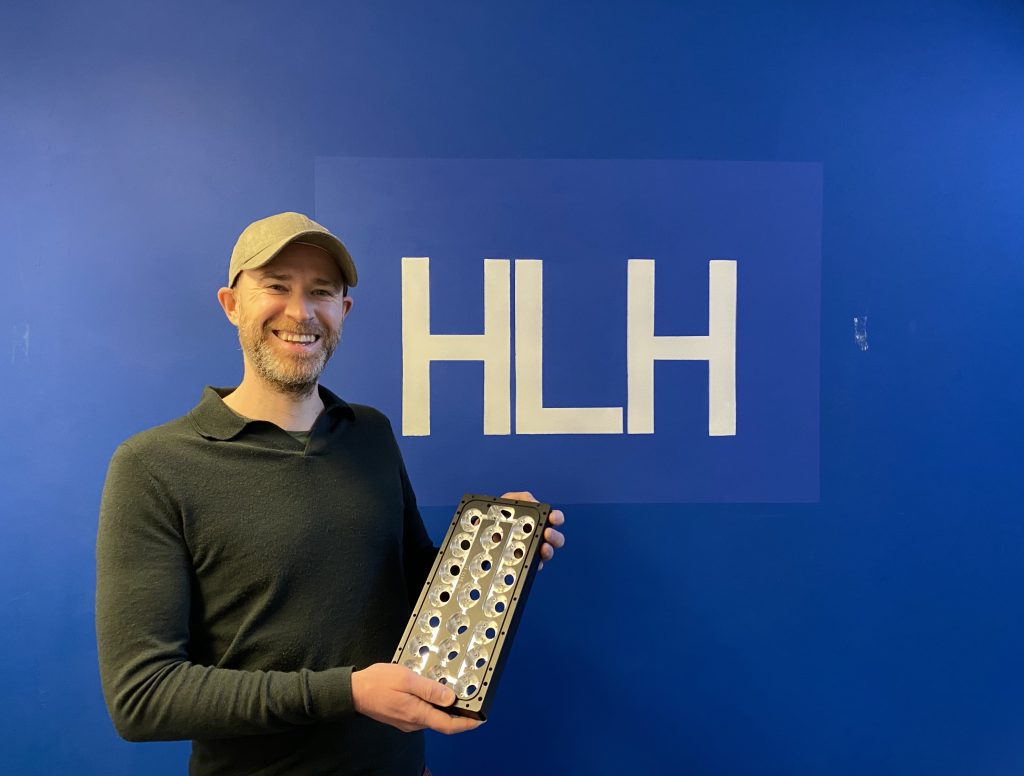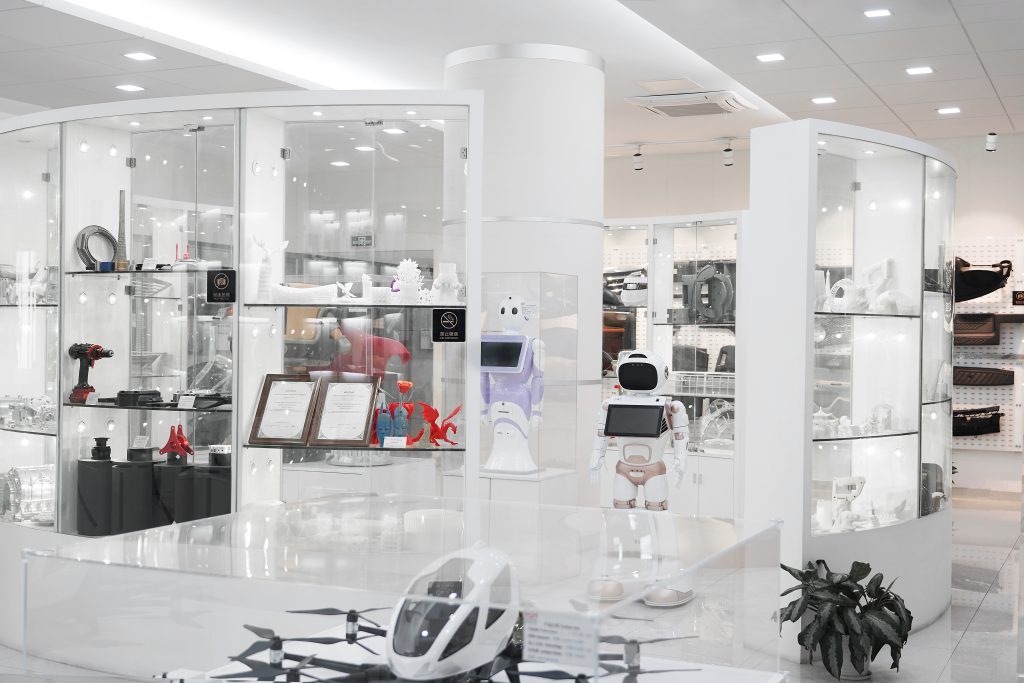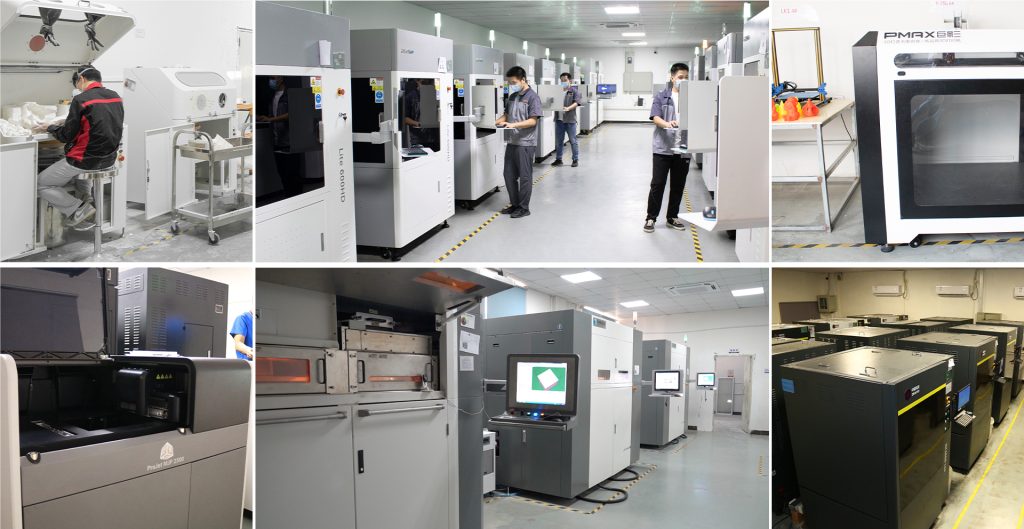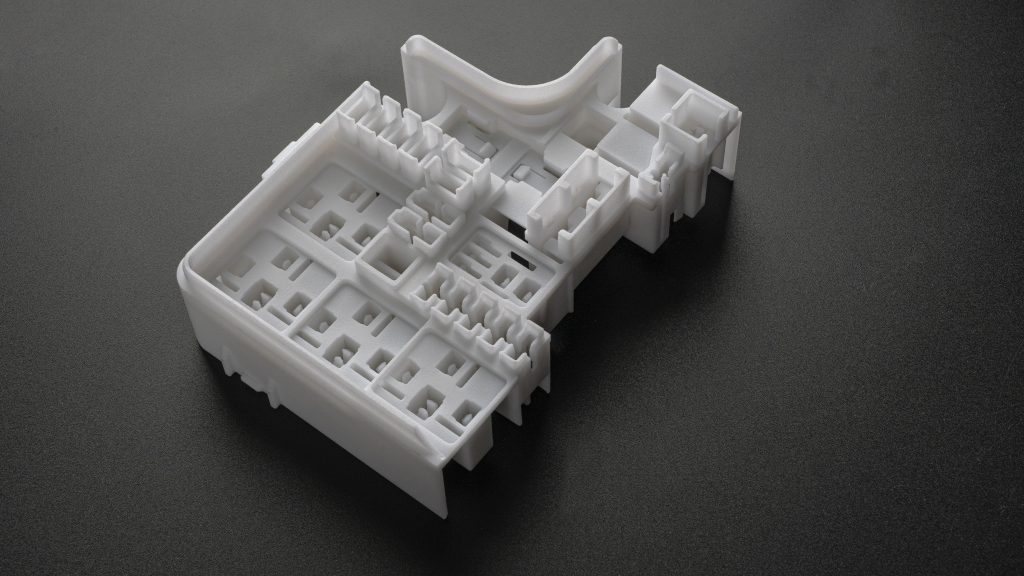3D Printing Industry recently visited HLH Rapid to speak with James Murphy, Co-Founder of HLH Prototypes and Director of HLH Rapid, and learn more about the company’s global manufacturing capabilities.
Founded in China in 2008, HLH Prototypes is a manufacturing service bureau specializing in the rapid prototyping and high-mix, low-volume production of parts. The company offers a range of manufacturing technologies, including both metal and polymer 3D printing, CNC machining, injection molding and tooling, die casting, and vacuum casting.
The vast majority of the company’s production is conducted from four facilities in China, the largest of which is based in Guangdong, Shenzhen, and spans 12,000 square meters. The European arm of the company, HLH Rapid, was founded in 2021 and is headquartered in Leeds, UK.

Linking western businesses with Chinese manufacturing
With a background in journalism and film production, Murphy’s journey into rapid manufacturing has been anything but conventional.
“My background is not really in manufacturing at all,” explained Murphy. “When I was younger I went to China on holiday, and I thought it was amazing. The sense of hope and opportunity that everybody has out there was really appealing. So I came back, quit my job, and moved there.”
Murphy initially worked in the engineering department of a company that manufactured HDMI and USB cables. There, he first learned how to use CAD software and design programmes, which eventually led him to move to a prototype manufacturing company. Murphy explained that, after six months, the ownership of this company changed hands.
“My old boss asked me if I fancied starting another company with them. It seemed like an exciting opportunity, so we started the company HLH. The idea was to link up western business with Chinese manufacturing,” stated Murphy. “In 2010 we opened our first factory, and since then we’ve been growing fairly steadily.”

The company now employs over 300 people. What’s more, HLH has since grown its global reach further with the launch of HLH Rapid in 2021.
The decision to open a HQ in the UK, Murphy explained, was driven by a combination of personal and business-related factors. “I lived in China for 15 years, and when I first moved there I was just having a lot of fun. We were building a company, and it was all go, go, go.” However, after having children Murphy decided to head back to Leeds, where he had himself grown up.
Additionally, Murphy stated that the decision to open a UK-based subsidiary has strategic advantages. “I think it is really useful for us to have this location here because over 80% of all the work we are doing is for companies in Europe and North America,” commented Murphy. “There are plenty of advantages to being closer to them and being able to visit them easier and have conversations face-to-face. So that’s why we opened this place up.”

A suite of manufacturing technologies
HLH offers a broad range of manufacturing technologies. When the company launched, it specialized in the production of prototypes using traditional manufacturing processes. “When we first started, we produced very low volume parts, mainly using CNC machining and vacuum casting,” explained Murphy. “At that time, additive manufacturing was very, very expensive.”
However, according to Murphy, the price of 3D printers in China began to drop as patents expired, allowing domestic companies to manufacture their own 3D printing equipment and materials. “When we first started, an industrial SLA 3D printer might have cost around £250,000, but now you can get one for £20,000,” stated Murphy. “That drop in cost just opened the whole industry up in China. Between 2012 to 2015, it really started to take off.”
As such, HLH has since adopted a variety of industrial 3D printers, including SLA, SLS, FDM, Multi Jet Fusion (MJF), and metal laser sintering. The company now has around 100 3D printers, with 99.9% of all manufacturing being fulfilled in China. “Here in the UK, we have three desktop 3D printers that we only use for our own personal requirements, or if a customer needs something the next day.”
Besides MJF technology from multinational printing firm HP, the majority of HLH’s 3D printers are Chinese-built. Most of the company’s SLA 3D printers are from UnionTech, whilst the majority of their SLS and metal sintering machines are from Farsoon Technologies.
According to Murphy, despite being significantly more affordable, these 3D printers offer virtually the same 3D print quality as their western-made counterparts. “In terms of the parts coming out, it’s pretty much comparable to what people are using in the west, like 3D Systems’ 3D printers. There’s not really any kind of difference in the quality of the parts,” stated Murphy. “If you can get something that’s almost as good for a third of the price, you might as well do it.”

Addressing a range of applications under one roof
Providing this extensive suite of both traditional and additive manufacturing technology all under one roof is said to offer significant advantages. “Each different technology has its pros and cons. Each process has its own unique advantages” explained Murphy. “We work with a massive range of customers, projects and applications. So, it makes sense for us to have lots of different technologies to meet all of their different needs.”
HLH provides prototype and end-use parts to over 3000 companies in 50 countries. Murphy emphasized that these parts span a broad range of ever-changing applications. “The demand is always changing, so what we manufacture really depends on what the next big thing is,” explained Murphy.
As such, the company is currently producing a lot of parts for clean energy, energy storage, and waste reduction applications. “They are bringing a lot of new technology, and a lot of it is in the early research and development (R&D) stage.”
Elsewhere, HLH has seen demand within robotics, medical and biomedical, autonomous vehicle industries. “This industry is really good because we see demand in whatever’s new, and that’s what we work on,” added Murphy.
Murphy also views high-mix, low-volume 3D printing capabilities of HLH as adding value to customers. “The ability to make changes and manufacture bespoke parts with complex geometries is important for us,” explained Murphy. “There’s always applications where additive manufacturing is a good option. As the technology develops further, and as the materials develop, the potential use-cases will also increase quite considerably.

Differentiating within on-demand manufacturing
Murphy highlighted key competitors within the industry as being other manufacturing bureaus such as Protolabs, Xometry, and Hubs. However, according to Murphy, HLH differentiates from these competitors. “We offer something a little bit different to them because of how long we’ve been doing it, and how the company is set up,” explained Murphy.
Indeed, when compared to Xometry, Murphy highlighted the direct relationship HLH offers to its customers as being a key differentiator. “Essentially, we are the manufacturer. So, instead of talking to a middleman, the customer can talk directly to the people who actually make the part. I think that makes a big difference.”
Murphy also pointed to the “customer facing” resources on the website hlhrapid.com as adding value. Here, customers can access informative videos, design guides, and even virtual and live tours of the company’s facilities. “We try to make the website a resource rather than just an online brochure,” explained Murphy.
The future of HLH
Murphy hopes that “the future looks fairly similar to the past,” with HLH continuing to see steady growth. “For us, we just want to carry on doing what we’re doing, do it as well as we can, and stay at the forefront of the different types of technologies and processes that are available.”
In terms of growth globally, Murphy noted that the company hopes to grow HLH Rapid further within the UK. Whilst this growth is taking a little longer than had been initially anticipated, the medium to long-term goal is to expand HLH’s manufacturing capabilities in the UK and eventually North America.
Subscribe to the 3D Printing Industry newsletter to keep up to date with the latest 3D printing news. You can also follow us on Twitter, like our Facebook page, and subscribe to the 3D Printing Industry Youtube channel to access more exclusive content.
Are you interested in working in the additive manufacturing industry? Visit 3D Printing Jobs to view a selection of available roles and kickstart your career.
Featured image shows James Murphy, Co-Founder of HLH Prototypes and Director of HLH Rapid. Photo by 3D Printing Industry.


